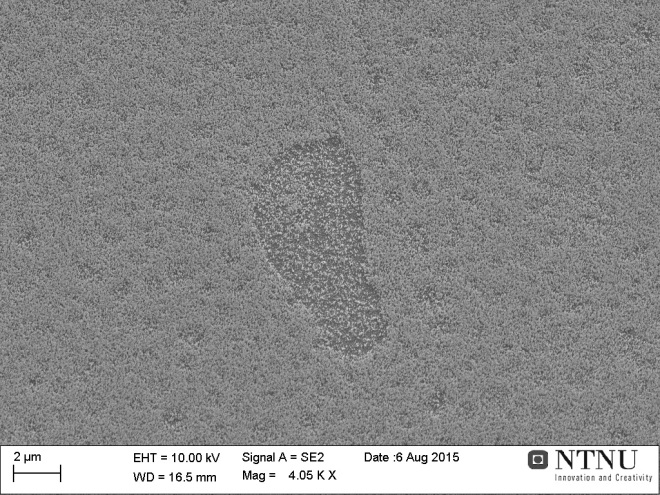Aside of conducting my research, I have a duty work as a lab assistant for one course work per semester. At the beginning I thought my involvement in this activity will bother me a lot. In fact, I kind of enjoy it.
A pastor in Baptist Church, to whom I usually update what I have been doing in the university, my current general research status, told me once, “that is great, now you have a chance to take a break. Reading a bit, planning for the next experiment and execute it confidently”. For some reason, his words relieve my stress.
What I am looking forward this semester is assisting student doing their coursework. Of course I have legal reason to get out from my office or else I have to sit the whole day in there, most likely with wandering mind if I can’t focus reading. Being with the students also interests me a lot. I can interact with them, showing them something, teaching them what I have learnt before them. I know at some point that they will surpass me and no surprise from my side, as they are the best mind that Norway has at the current moment.
Lab course will be officially started next Monday. I have schedule on Monday, at 8 AM. So, in order to make the lab session fruitful and lively with the student, I and other three lab assistants have conducted trial and run on two first module. We did it yesterday for lithography part and today for scanning electron microscopy (SEM)-energy dispersive x-ray spectroscopy (EDS) part.
Most of the steps I went through for this labwork are the same with the labwork this spring. In here, the teaching assistant basically will show them the basic guidance how to do proper work, and then licensed will be given to them once they pass. After that, they will do their own work, based on the objectives that we have set for them. This labwork will train them to be an independent researcher! Cool!
For the trial and run, since we were not able to find the mask specifically designed for this course, we used the one from the labwork last semester. The rest are exactly the same. It took place in Student lab in Nanolab. We did scribbing, then it is continued to cleaning+dehydration, coating, soft baking, exposing, developing and inspecting the sample; These steps are typical for conventional photolithography. Oh yes, we skipped post exposure bake and hard bake. If my memory serves correctly, we did not do post exposure bake and hard bake due to the datasheet for the negative photoresist we used, does not require these steps.
Some mistakes were done during this lab session. In the scribbing part, we spent quite some time to split the 2-inch Si wafer properly with 111 direction.
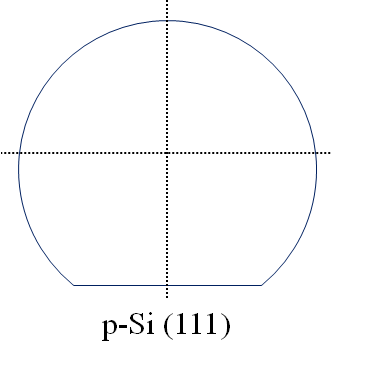
It is not easy :p
Errors during the photolithography steps were unavoidable: fallen sample, flipped sample with applied photoresist on it. But overall, it was fun 😀
We spent like three hours in total to do the step. The main problem was the produced samples (three in total) were not developed completely even after waiting time for about 10 minutes. The reason can be the expired photoresist or expired developer. Since we will not measure electrical properties of our sample, spots laying around on the channel are not problem. Nevertheless, I will do strict examination so that they have such kind of habit when they are working indepently. Ah, the geometry that we are aiming is Hall bar.

The processed samples were then brought to SEM for geometry inspection, focused especially on the cross section where the undercut pattern is checked. Once they were imaged, the last characterization was done using EDS. This technique can tell us what kind of elements are building up in specific area of the imaged sample. With EDS, we can get information whether we have correct deposited materials on the sample… or not.
Honestly, we had a struggle during elemental mapping using EDS technique. Theoretically, no matter what the size of the analysis area is, it should give what it should be. We had elements which were not supposed to be there, aside of other elements which were successfully mapped correctly. Let’s say we have image as illustrated like this:

Based on the image, we have metal on top of the GaAs sample. The metal itself should be consisted of, for example: Ge/Ti/Pt/Au where Au being the thickest part (200 nm) while Ge, Ti and Pt are around 20 nm, each. The EDS show expected Ga and As mapping where its concentration are more intense (indicated with more words of “Ga” and “As”) in the outside of the metal contact.

In the metal contact itself, we had Pt and Au elemental mapping at the correct position.
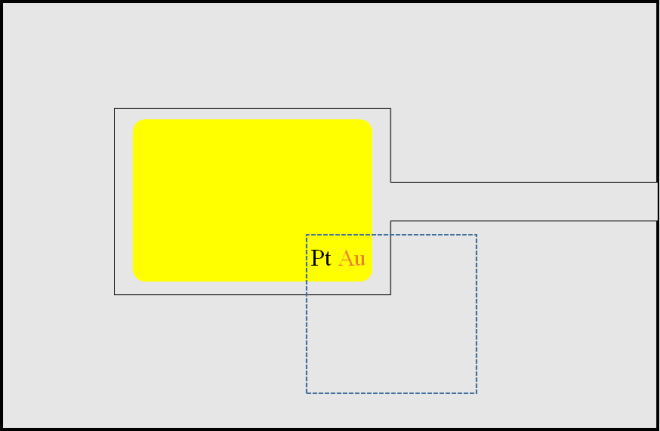
Unexpected results we got from the two most bottom layer of the metal: Ge and Ti, where they appeared not only in the metal contact, but outside as well. Even more, it looks like the concentration of Ge was lot stronger in the outside area than in the contact.
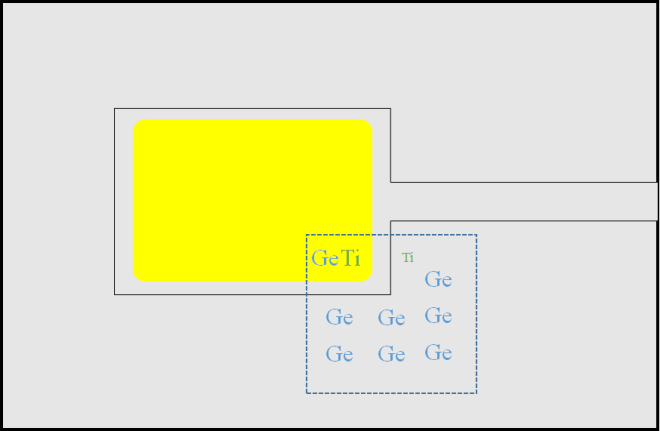
After discussion with friend, a suggestion come to use smaller analysis area. Beside larger spot size of the incoming electron, the reason is the scattering of the x-ray signal passing through other parts of the sample, illustrated as rough sketch below (size is not scaled).

The results were much better than the previous one with larger analysis area. Each of the registered elements sit in the place where they should be sitting. Especially for Ge, more intense signal came from it with smaller analysis area. The only drawback was that, we cannot image the transition border between the metal and substrate at the same time. If we had done this, the same result would have appeared like the one before. The only thing that can be done were imaging one part standing close to each other, and makes an analysis of them separately.
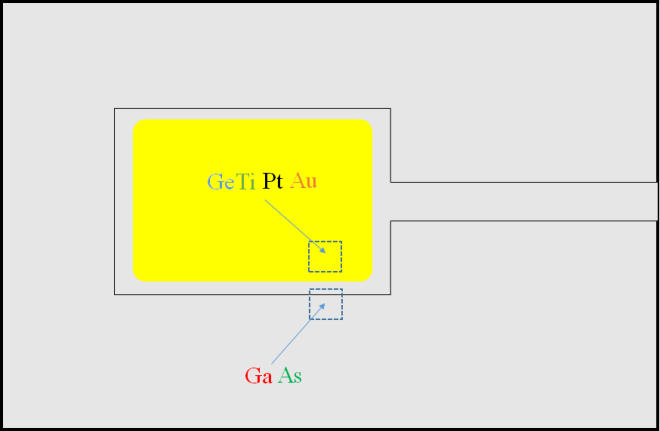
I am not sure whether this is a correct approach or not. Any suggestion and thought are welcome!

